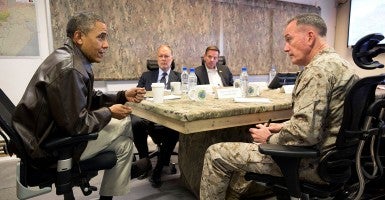Has the United States possibly been rendered blind to an impending terrorist attack? A senior Obama administration counterterrorism official worries that that may be the case.
In a thought-provoking article entitled “US Flying Blind To Looming Terror Plots,” writer James Kitfield quotes an unnamed senior Obama administration counterterrorism official. Speaking about the growing threat, in the context of the Edward Snowden leaks and the way in which terrorists have adapted their methods of communicating and operating given the Snowden leaks, the official says, “Combine a much more savvy generation of terrorists in terms of communication skills with these revelations about our collection methods, and I do worry that we have been blindsided to terrorist plots.”
Add to that the fact that the number of terrorist attacks across the globe, according to the State Department, increased 40 percent between 2012-2013. Kitfield’s article surveys the metastasizing global terror threat, including ISIS in Iraq, foreign fighters in Syria, al-Qaeda and its affiliates like al-Shabab and AQAP, and other emergent threats.
This growing threat no doubt contextualizes the administration’s request for tighter security overseas. Various news reports indicate that U.S. intelligence officials are concerned that al -Qaeda has developed a sophisticated bomb, which could be nearly undetectable.
Just last weekend, Attorney General Eric Holder was interviewed by Pierre Thomas of ABC News in London, where he said that the current terrorism threats involving foreign fighters in Syria as well as the potential for threats involving the Islamic State of Iraq and Syria were “more frightening than anything I think I’ve seen as attorney general.”
Holder compared the current terrorism threats to the 9/11 attacks, but unlike “something that kind of came out of the blue,” he said that this is “a situation that we can see developing and the potential that I see coming up.”
Stepping back from the current threat, it is important to recall that the 9/11 Commission Report cited examples where the U.S. intelligence community failed to “connect the dots” prior to the 9/11 attacks due to an institutional inability and capability to thwart terrorism before events occur. The report made numerous recommendations aimed, in large part, to allow the government to lawfully connect the dots.
Since 9/11, there have been at least 61 known terrorist plots that have been disrupted, as Heritage scholars have written about over the years. Those plots were disrupted because we developed the ability to connect the dots, through lawful, effective, and for the most part, classified programs. Now, some of our key capabilities have been unlawfully exposed, handing enemies of the United States vital information.



























